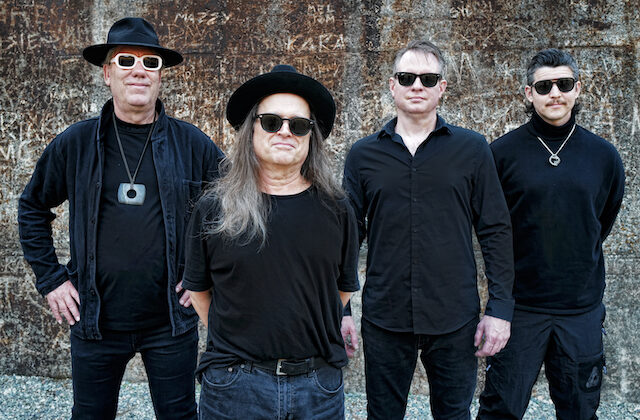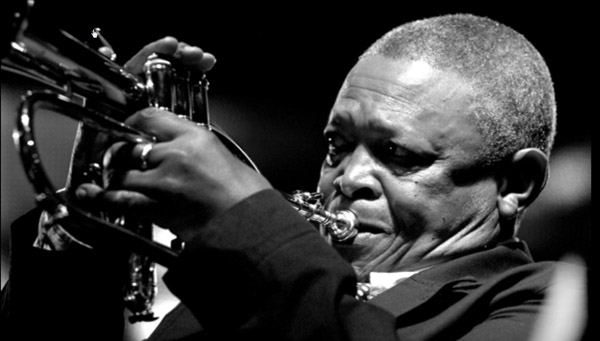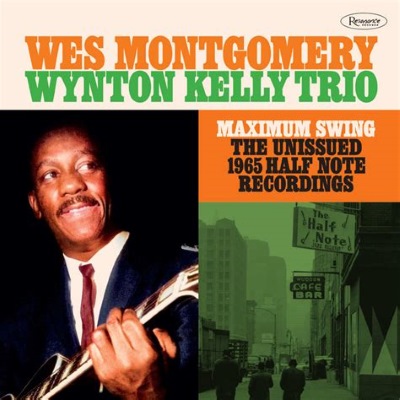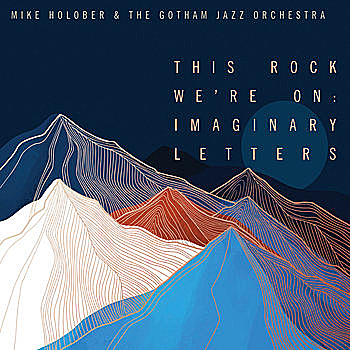Despite numerous challenges, big-band jazz continues to offer original compositions, rewarding musical experiences, and exciting recordings. The transition from dance-hall big bands of the thirties and forties started with the introduction of advanced harmonies, flowing lines of rhythm, more muted hues, longer thematic compositions, and Impressionistic influences by forward-thinking leaders like Claude Thornhill, Duke Ellington, Bob Brookmeyer, and Gil Evans. In turn, their ideas—and the survival of community-based big bands—contributed to this generation’s actual, though often little recognized, abundance of jazz big bands.
The Maria Schneider Orchestra, Darcy James Argue’s Secret Society, the Jazz at Lincoln Center Orchestra, Orrin Evans’s Captain Black Big Band, Arturo O’Farrill & the Latin Jazz Orchestra, the Mingus Big Band, Conrad Herwig’s Big Band, the Vanguard Jazz Orchestra, Ryan Truesdell’s Gil Evans Project, the DIVA Jazz Orchestra, Steven Feifke’s Generation Gap Jazz Orchestra, the Count Basie Orchestra conducted by Scotty Barnhart, Eunmi Lee’s Jazz Orchestra, Remy Le Boeuf’s Assembly of Shadows, and John Beasley’s MONK’estra represent some of the nationally recognized big bands.
A few of the community-supported and international jazz big bands include Pittsburgh’s Manchester Craftsmen’s Guild, Argentina’s Córdoba Jazz Orchestra, the Westchester (New York) Jazz Orchestra, the South African National Jazz Orchestra, New Orleans’s Uptown Jazz Orchestra, Cologne’s WDR Big Band, the Cleveland Jazz Orchestra, Montreal’s Christine Jensen Jazz Orchestra, Boston’s Aardvark Jazz Orchestra, Vancouver’s Daniel Hersog Jazz Orchestra, Indiana’s Buselli-Wallarab Jazz Orchestra, Sydney’s Australian National Jazz Orchestra, the Memphis Jazz Orchestra, Jazz Sinfônica Brasil, the Colorado Jazz Repertory Orchestra, the South Florida Jazz Orchestra, the Seattle Women’s Jazz Orchestra, Paris’s Orchestre National de Jazz, and the Chicago Jazz Orchestra.
Big bands endure.
And Mike Holober’s Gotham Jazz Orchestra rises.
It rises from the inspiration of Holober’s vision…expressed through sound.
The concept for his most recent album, This Rock We’re On: Imaginary Letters, encompasses a range of artistic disciplines and social and natural endeavors, jazz being but one of them. The integration of literary forms of poetry, epistolary expression, and essays with singing and big band arrangements amounts to a revelatory masterwork that captures in another two-disk album Holober’s expansive talent and his lifelong beliefs.
An avid environmental Holober has climbed the 115 highest peaks in the Northeastern United States. In addition, he has hiked throughout the country, as well as in Mexico, Italy, and Switzerland. Eventually, Holober developed the idea of composing as poems imaginary letters about environmentalism, their composed words being sung by Jamile Staevie Ayres.
Holober amplifies upon the words, and adds sweeping grandeur to the thoughts behind them, by alternating the directness of the songs—conceived as communications between two entities (most often people)—with the graceful magnificence of the orchestra as it elaborates upon the letters’ succinct implications.
The support of some of New York’s top jazz musicians, who share Holober’s ultimate mission, contributes to the success of his artistic triumph. Not only do they provide the colors and textures of Holober’s compositions with a range of sonic breadth and distinctive timbres, but also, band members like Chris Potter, John Patitucci, and Marvin Stamm—jazz musicians recognized for their distinguished careers—expand upon the words’ emotional bearing through memorable improvisations.
The environmentalists who captured Holober’s imagination and whose personalities he respectfully depicts include: Ansel Adams, Rachel Carson, Sigurd Olson, Terry Tempest Williams, Wendell Berry, and Robin Wall Kimmerer.
One would imagine that the subjects of his magnum opus would be flattered by his immersion into their accomplishments and ultimately their beings. Author and environmental activist Williams wrote in the liner notes that each letter “is a love letter to this beautiful, broken world…. Thank you for this brave testament of belief that there is something deeper than hope.”
So, everyone involved with This Rock We’re On: Imaginary Letters understands the intertwined earthly and spiritual importance of the album’s message. The overriding theme itself addresses the condition of Earth.
Starting this review with the most poignant group of recordings, three tracks address photographer Adams’s thoughts. The lyrics of the first, “To Virginia,” are those of a poem that the nature photographer wrote to his wife, Virginia Best Adams. Who knew that he wrote poetry so well? But then, Ansel Adams first met his wife when he played piano in her father’s home in Yosemite. For 2:50 minutes, Ayres sings his words, which ironically Ansel Adams thought were inadequate to describe natural beauty: “I would write you my love / in a myriad shining lines… / And yet I know / I have no power / to sound the deeps below… / So I shall sing with silence… / To Virginia, dear Virginia / all words are less.” Holober shaped the composition of “To Virginia” around the cadences and emotions of the poem, climaxing at the sustained word “bless.” Jody Redhage Ferber’s cello and Holober’s piano accompany Ayres with melancholy harmony and counterpoint.
The title of the second track of the Adams set, “Dear Virginia,” contains a pun. That name refers not only to his wife, but also to his granddaughter, Virginia Mayhew, who, accompanied only by Holober, plays a tender tenor sax solo about her grandparents. Stamm burnishes the performance with his own relaxed solos that he trades choruses with Mayhew’s suggestions of “After the Rain.”
Holober completes the ternion with his modal orchestral arrangement of “Domes.” A reference to geological protrusions in Yosemite, the piece, offsetting the ruminations of the “Virginia” compositions, is an invigorating and interesting palette of colors blending from the unified strength of the orchestra. Joyous and robust, “Domes” combines the brass section’s forceful accents with contrasting quieter responses from James Shipp on vibes, Nir Felder on guitar, and Holober on piano. It features Scott Wendholt’s exhilarating upper-register trumpet solo and Ben Kono’s stirring alto sax work.
The trio of compositions about Rachel Carson consists of bookending poems: the first, “Another Summer,” from Carson to her friend Dorothy Freeman and the third, “Another Summer Epilogue,” from Freeman to Carson. Ayres sings, again with irony, but with considerable sadness as the wisdom and finality of the set ensues. Carson’s imaginary letter: “There will be always be another summer / and until then / I’ll count the tides….” Freeman’s later imaginary letter: “There will always be another summer / until tides flood / and you are gone / with you my hope / broken beyond all repair.” And in between is Holober’s composition of “Tides,” Ferber’s moving cello solo, flowing until 2:28, when Jason Rigby on tenor sax softly joins her with long tones and then a melody. After that, the orchestra blossoms with elegant hues, subtle dynamic shapes, and sweetening textures like flute embellishments. In 1964, Freeman poured Carson’s ashes into the sea. Even in 1937, Carson wrote convincingly about tides: “Neither you nor I, with our earth-bound senses, know the foam and surge of the tide that beats over the crab hiding under the seaweed of his tide-pool home; or the lilt of the long, slow swells of mid-ocean, where shoals of wandering fish prey and are preyed upon, and the dolphin breaks the waves to breathe the upper atmosphere.” Wiser but still fascinated by the oceans, Carson wrote near the end of her life: “We live in an age of rising seas. In our own lifetime we are witnessing a startling alteration of climate.”
As a masterpiece, This Rock We’re On: Imaginary Letters, contains more content than can be adequately described in a review. It’s one of those complex works of art that offers additional pleasures each time it is heard.
But there’s one more element that deserves mention: anthropomorphism. Some of Holober’s poems quote the words of inanimate objects. A structure speaks. A tree creates writes. In the non-imaginary world, church bells sing, beckoning people to come inside. The Munich glockenspiel entertains as its characters dance and music plays; the building communicates with people. So do many others.
Specifically, Holober wrote “Tower Pulse” to simulate and expand upon—with shimmer and chiming and rising phrases and a breezy motive—the sounds of Castleton Tower (Castle Rock) in eastern Utah, where Williams lives. And “Refuse,” referring to one of her books, quotes Castleton Tower’s letter to her: “Lift your pen and write / I’ll be here / when they are gone… / They’ll be dust before I am sand / No monolith I / just a finger / pointing to the stars we share.”
Similarly, “Noetry” (noe-tree) imagines a tree sending a letter to environmental scientist Robin Wall Kimmerer. All of Holober’s imaginative art forms (composition, orchestral arrangements, poetry, song) converge when he has a tree write: “I know a tree named poetry…. / enjoy it now but know that soon / as far as you can see / what may become of me / the end of poetry.”
A sobering thought.
And that’s the point of This Rock We’re On: Imaginary Letters. Holober conveys through music the beauty of nature that he treasures as well as the immediacy of its preservation.
Artist’s Web Site: https://mikeholober.com
CD’s Web Site: mikeholober.bandcamp.com








